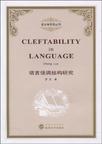语言强调结构研究
出版时间:2009-8 出版社:武汉大学出版社 作者:罗澄 页数:188
前言
Research in language universals as anchored in functional linguistics has drawn continued attention and interest from linguists, language educators and professionals of other applied linguistics areas in recent years. Through studying crosslinguistic variation, important generalizations about natural languages can be made which would not be revealed by investigating any single language. In that regard, previous studies of the Noun Phrase Accessibility Hierarchy as a universal tendency have largely focused on relativization, whereas those of cleft sentences have barely touched upon cleftability with regard to the Accessibility Hierarchy. Given such a gap in the research, it seems that a systematic crosslinguistic investigation of cleftability with regard to the Accessibility Hierarchy will add significant contribution not only to the research on cleft construction by converging the Accessibility Hierarchy studies and the research on cleft sentences, but also to finding out how human languages avail themselves of various linguistic strategies for contrastive emphasis in communication in the study of language universals as an important part of linguistic theory.
内容概要
《语言强调结构研究》针对语言研究和教学中常见的强调结构之特点及问题,用大量的跨语言实例,通过深入浅出地讨论有关语言通则,揭示了强调结构的规律,对习得和讲授强调结构,具有非常的指导作用。 功能语法对名词短语可用顺序的研究,过去主要针对定语从句,而忽视了强调句。《语言强调结构研究》就强调结构的分裂句提出三个原则:可强调顺序原则、名词性原则和主题性原则。可强调顺序原则将主语、直接宾语、间接宾语、介词宾语等依次排列,解释其可被强调程度。名词性原则除名词成分外,还适用非名词成分。主题性原则在涵盖前两者的基础上,还解释了状语的可强调性,从而最充分地描写和解释了强调结构。 《语言强调结构研究》无论在对学习英语等语言和教材编写的具体指导上还是语言理论研究上都在同类著作中独树一帜,创造性地填补了语言学习和研究的若干空白,特别是国内在多语种综合研究方面开创了先河。 《语言强调结构研究》适用于从事语言教学和研究的高校教师和从事语言学研究的科研人员,也可以作为语言专业的研究生和本科高年级学生的辅助教材,同时也可作为一般语言爱好者的参考书。
作者简介
罗澄,男,毕业于武汉大学,获英语语言与文学专业学士、硕士。后留学加拿大多伦多大学及马尼托巴大学,获得语言学暨应用语言学博士,并任教于加拿大布鲁克大学英语语言学系,为该系终身教授。目前兼任武汉大学珞珈学者暨讲座教授及广西大学的客座教授。 罗澄博士的教学与科研涉猎广泛,包括功能语言学、句法学、语义学、语用学、话语分析学,以及应用语言学中的语言测试学、二语习得、阅读理论、研究方法论等。他在各种国际会议和知名学科杂志上发表、宣读近百篇论文并著有Analysis of Typical Errors in English by Chinese EFL Students;A Picture is Worth...1000 Words;Beginner Chinese Reader Series等专著。还应邀到美国、泰国和多次回国进行学术报告、专题讲座、讲课及其他学术交流活动,为传播中华文化和促进中加学术交流与合作作出了重要贡献。
书籍目录
List of Tables/FiguresAbbreviationsPrefaceChapter 1 Introduction1.1 The Noun Phrase Accessibility Hierarchy1.2 The Cleftability Hierarchy1.3 Theory and Methodology1.3.1 AH as a universal tendency1.3.2 A working definition of clefts1.3.2.1 Previous definitions1.3.2.2 Clefts in non-configurational languages1.3.2.3 A working definition1.3.3 Clefting strategies1.3.4 Other methodological considerations1.3.4.1 Reduced Clefiability Hierarchy through collapsing1.3.4.2 Measurement of grammaticality and universality1.3.4.3 Data and analysisChapter 2 NP Cleftabifity2.1 The Cleftability Criteria2.2 Grammaticality: Cleftable Versus Uncleftable2.2.1 Clefting of subject only2.2.1.1 Chadic languages2.2.1.1.1 Margi2.2.1.1.2 Bade. Ngizim. Karekare. and Dera2.2.1.2 Toba-Batak2.2.1.3 Indonesian2.2.1.4 Malagasy2.2.2 Clefting of NP arguments2.2.2.1 Basque2.2.2.2 Berber2.3 Clefting Strategies: Deletion Versus Retention2.3.1 Polynesian languages2.3.1.1 Maori2.3.1.2 Tongan2.3.1.3 Samoan2.3.1.4 Rennellese2.3.2 Summary2.4 Structural Complexity : Wider Versus Narrower Distribution2.4.1 Maori2.4.2 English2.4.3 Danish2.4.4 Kinyarwanda2.4.5 Tera2.4.5.1 The cleft construction2.4.5.2 Clefiability2.4.5.3 Distributions of SU and ADVL as cleft focus2.5 Frequency of Occurrence : More Frequent Versus Less Frequent2.5.1 Intralinguistic frequency2.5.2 Crosslinguistic frequency2.6 Promotion to Higher Positions for Clefting2.6.1 Subjectivization in Indonesian2.6.2 Objectivization in Kinyarwanda2.7 Diaehronie Precedence : IndonesianChapter 3 NP Cleftability——Counterevidenee?3.1 Cleftability and Ergativity3.1.1 Mayan languages3.1.2 Pukapukan3.1.3 Subject reinterpreted3.2 Cleftability and Language Specific Constraints: Chinese3.2.1 The problem of DO uncleftability3.2.2 A linear constraint3.2.3 Is shi an adverb?3.2.4 0uasi-verbs and the constraint revisited3.2.5 Summary3.3 ConclusionChapter 4 Non-NP Cleftability4.1 Introduction4.2 AP Cleftability4.2.1 The Nouniness Principle4.2.2 Cleftability of predicational APs.the Specificity Condition4.2.3 Contextually generated specificity.English4.2.4 Summary4.3 VP Cleftability4.3.1 Limitations and conditions4.3.2 Crosslinguistic evidence4.3.2.1 Morpho-syntactic nominalhy of clefted VPs : English. Berber. Breton. and Hausa4.3.2.2 The retention strategy for VP clefting : Vata . Yoruba. and Haitian4.3.3 The Specificity Condition revisited: English4.3.4 Summary4.4 PP Clefting4.4.1 Proposition-internal and proposition-external PPs4.4.2 PP clefting and the Nouniness Principle4.5 ADVP clefting4.6 Summary and ConclusionChapter 5 Towards a General Account of Cleftability5.1 Theme and Thematicity5.1.1 Theme5.1.2 Thematicity5.2 The Function of Clefts5.2.1 Focused thematization5.2.2 Clause binding and salient information5.3 The Thematicity Principle (TP)5.4 Further Empirical Evidence5.5 SummaryChapter 6 The Contrastive Focus Marker6.1 Introduction6.2 Formal Identity between the CFM. the Copula and the Demonstrative6.3 Polesemy in Mandarin Chinese6.3.1 Synchronic evidence6.3.2 Diachronic evidence6.4 The Common Pragmatic Function6.5 Crosslinguistic Evidence6.5.1 Hebrew6.5.2 Margi6.5.3 Mokilese6.5.4 Kusaiean6.5.5 Malayalam6.6 An Iconic Account6.7 ConclusionChapter 7 ConclusionReferencesLanguage IndexSubject Index
章节摘录
The fact that direct objects in the aforementioned Polynesian as well as Mayan languages are more accessible than (ergative) subjects poses a challenge for the proposed Cleftability Hierarchy as a putative universal. To solve this problem, we can either declare the inadequacy of the CH, or reinterpret the concept subject so that absolutive NPs can be treated as subjects. Since the former solution is undesirably simplistic before other possibilities are exhausted, rather than quickly dismiss the CH as untenable, the latter alternative will be examined by proposing a solution by reinterpreting subject and object in ergative patterns, so that absolutive NPs can be reinterpreted as SUs and ergative NPS as DOS. It should be noted that reinterpretation of subjects relies crucially on the relationship between morphological ergativity and syntactic ergativity, regarding which two opposing views have been expressed, viz. the Integrated Position and the Independent Position. According to the Integrated Position, the categories picked out by the case marking of a language are the same categories that its syntactic rules refer to, i.e. the syntax of every language should parallel its morphology. For example, morphologically accusative languages should not exhibit syntactic ergativity, and morphologically ergative languages should not exhibit syntactic nominativity. According to the Independent Position (Anderson 1976, Perlmutter & Postal 1974), the categories picked out by the case marking of a language need not be the same as those that its syntactic rules refer to. Therefore, a languages syntax and its morphology may be organized differently, such that a morphologically ergative language may turn out to be syntactically accusative.
图书封面
评论、评分、阅读与下载
